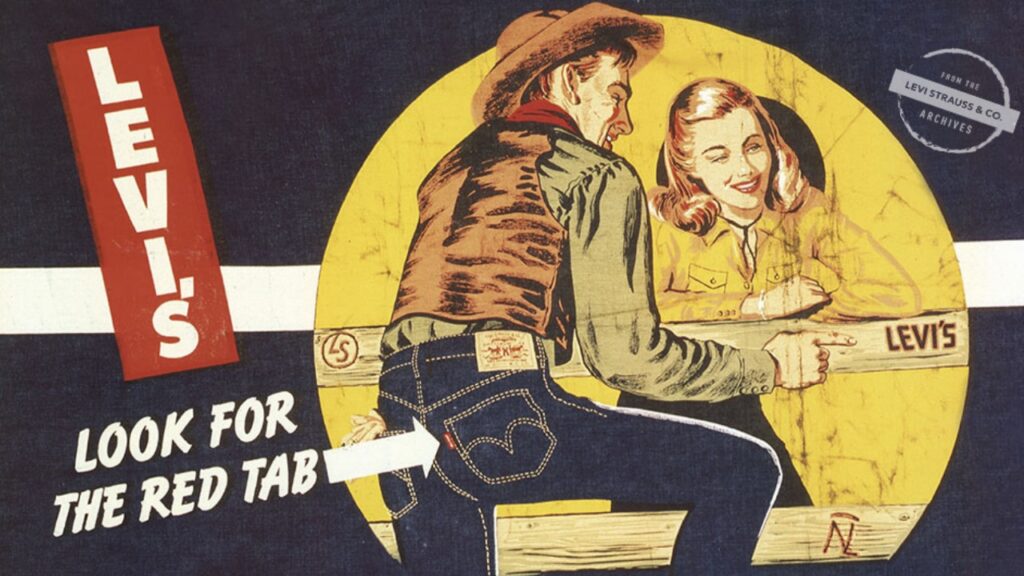From its early application in the workwear sphere to its appeal in the contemporary fashion industry, denim jeans have stood to be a fortress against time. Be it the rugged cowboy aesthetic of the American Wild West or the counterculture movement of the 1960s, there is one brand that has seen it all. Enter: Levi’s.
Given the current fast fashion norms, it is highly unlikely that you come across a pair of expertly crafted jeans that speak a unique design language. Yes, even if it’s current-day Levi’s (sadly). It’s much more sustainable and better quality-wise to, instead, thrift a pair of vintage Levi’s that are going to give your wardrobe the sturdiness and appeal it needs with a touch of vintage elegance.
There are certain pointers to keep in mind to be able to identify vintage Levi’s like many denim experts out there. It is undoubtedly going to be worth it as owning a pair of vintage Levi’s extends beyond just its unmistakable quality and craftsmanship. Before we jump into the process of dating and authenticating vintage Levi’s, let’s explore the denim heritage that made the brand what it is today.
Exploring LEvi’s heritage
Undoubtedly, this is the denim empire that pioneered a timeless legacy. It began when a German immigrant, Levi Strauss, created a denim work pant reinforced with copper rivets to make it more durable for workers. That, frankly, changed everything.
Levi’s was the first brand that recognized the need for and introduced a line of work pants for women, Lady Levi’s. Before this, the ladies were just used to borrowing their husband’s 501s.

The vintage Levi’s 501 became a symbol of the counterculture movement in the 1960s. It was part of the go-to outfit for many activists. When the Berlin Wall fell in 1989, hundreds of youth gathered at the wall with many donning their (now) vintage Levi’s 501s to celebrate their newfound freedom. The iconic pair became synonymous with the freedom of self-expression.

Over the 20th century, the Levi’s jeans became a must-have for the wardrobe of many artists and influencers. Transcendent Hollywood icon, Marilyn Monroe, repped the Lady Levi’s 701 and brought it into the mainstream women’s fashion in the 1950s. She was also photographed wearing the Levi’s 501s on numerous occasions.

In 1956, Rock and Roll legend Elvis Presley debuted the Levi’s black denim jeans in his film Jailhouse Rock.

As we see, Levi’s has been woven into the fabric of many significant cultural movements and iconic eras over the years. It makes the experience of owning a vintage Levi’s all the more rewarding. Here are the vintage Levi’s articles you should specifically be keeping an eye out for:
Valuable Vintage Levi’s Articles to look for:
Levi’s 501
Of course, the ‘Original Blue Jean’ or the vintage Levi’s 501 is a must-have. These came with a button-fly. The fitting was straight through the hips, thighs and legs with a wide cut enveloping the backside. Vintage iterations of this jean had a high-rise which reduced to kind of a mid-rise as the years passed.
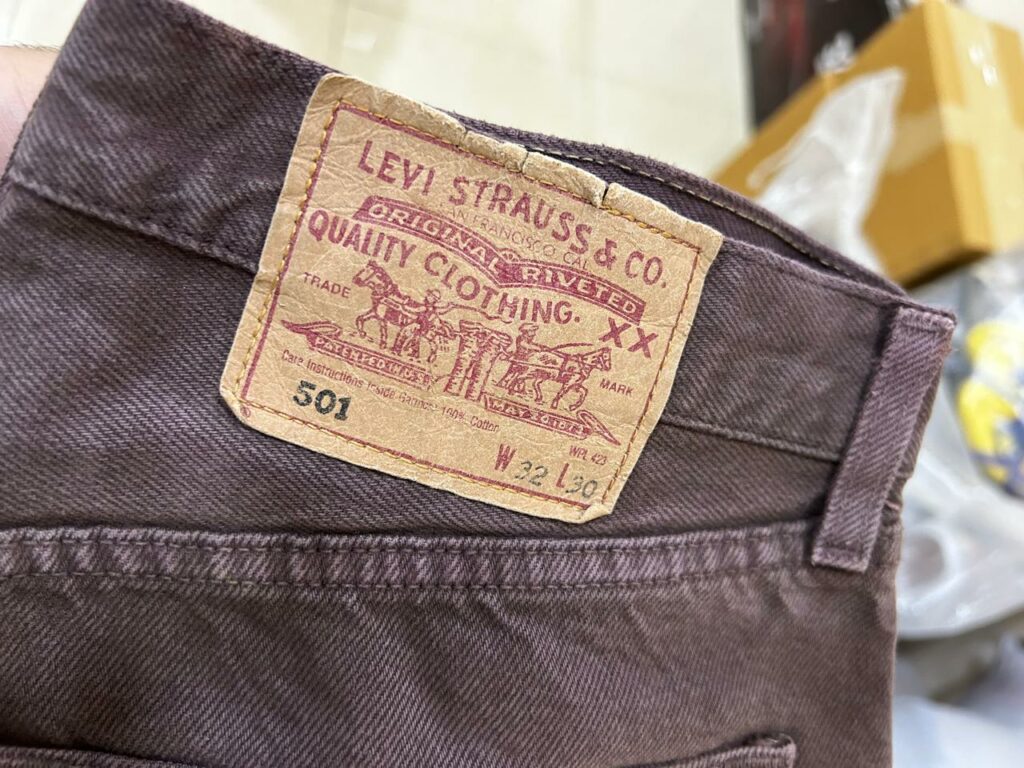
Levi’s 505
For a more fitted look, you can opt for the Levi’s 505. This was introduced in the 1960s with a zip fly (as opposed to the 501’s button fly) for a more contemporary look. The fitting was straight through the legs but slightly narrow at the waist and the hip. More vintage versions of this jean had a higher rise as compared to newer models.
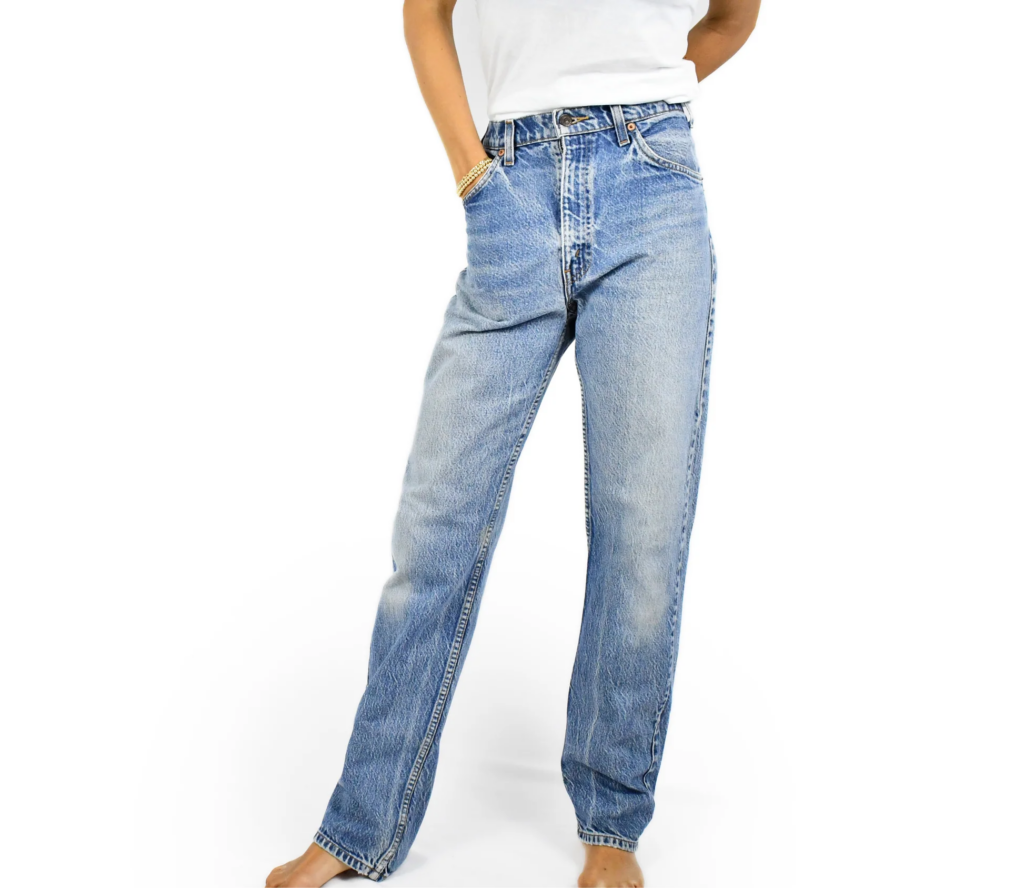
Levi’s Denim/Trucker Jacket
Many people aren’t aware that alongside being the inventor of the ‘original blue jean’, Levi Strauss also introduced his take on the denim jacket in the late 19th century shortly after. Vintage Levi’s denim jackets are classified mainly into 3 categories: Type I, Type II and Type III. Type III are referred to as the Levi’s Trucker Jackets and were manufactured 1962 onwards. If you are into thrifting vintage denim wearables, these vintage Levi’s jackets are must-haves and are highly sought after in the vintage markets by collectors and admirers. (Link to a guide on vintage Levi’s denim jackets is mentioned at the end of the article).
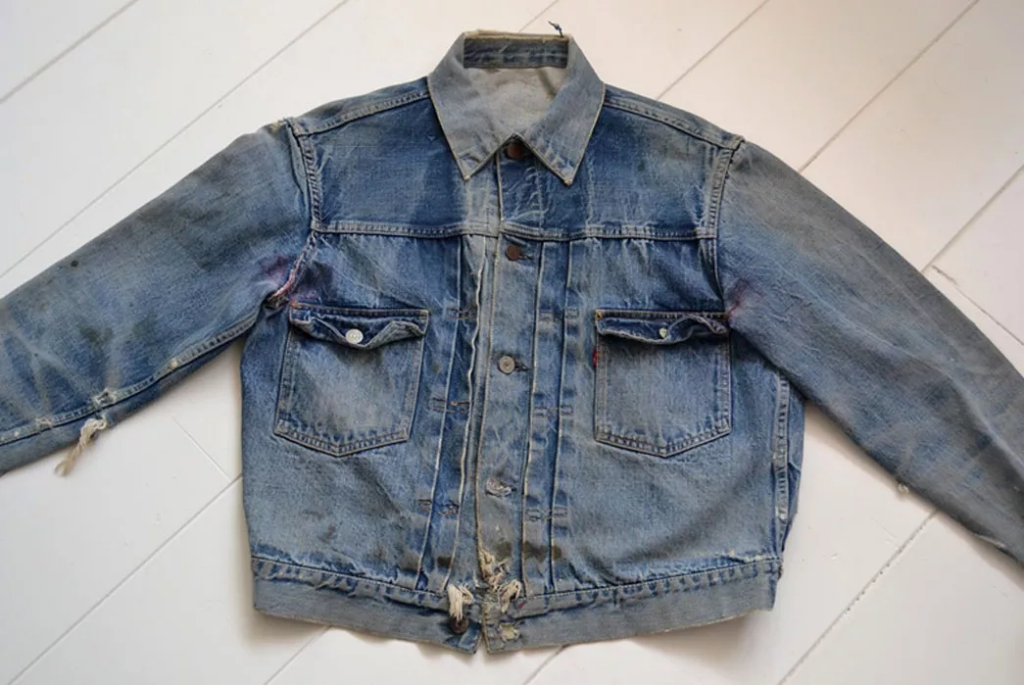
It is likely that you come across a vast many iterations of vintage Levi’s articles. Varying shades of indigo, acid washed, patched, ripped, custom-made, Levi’s corduroy, Bell Bottoms, the 701s, the 694s, among many others. These pieces also hold good value in the vintage market as long as they are authentic and old. Here is how you can authenticate your pair of Levi’s and assess whether it’s vintage or not:
How to identify vintage Levi’s?
Check the tab at the back pocket (Breast pocket in case of jackets)
Check for the coveted Big E on the red tab: A vintage Levi’s piece, be it the denim jacket or the 501 jeans, would come with a capital ‘E’ in the word ‘LEVI’S’ spelled on the red tab (1930s onwards). It stayed like this till the early 1970s after which it started being spelled with the lowercase ‘e’.
The Orange Tab: The Levi’s orange tab debuted in the 1960s to differentiate other lines of Levi’s from the 501s which were famously trademarked by the red tab. It indicates jeans produced between 1960s-1980s.
The Silver Tab: These were common from the 1980s to 2000s. Clothing produced by Levi’s during this time with the silver tab was in line with the skateboarding fashion scene of the era, showcased through baggy and casual fits. Given the fact that this was also more than 20 years ago, it is also be considered a vintage Levi’s today.
Check the care tag (found near the inside of the back pocket)
Levi’s introduced care tags on their clothing in 1971. If you come across a pair of their jeans that looks and feels vintage and doesn’t have a care tag, you can be reasonably sure that its pre-1971 (unless there are visible signs of the tag having been cut off). Other than the code of the date being mentioned on the tag itself, there are several giveaways that can help you to reasonably estimate the age of a vintage Levi’s article.
Check the material the tag is made from. Here is a guide:
1972-1974: This was the stamp era when the care instructions including the date label were stamped at the back of the pocket.
1974-1986: Unbranded, single and small rectangular care tag made of a paper-like material.

1987-early 2000s: The branded care tags. These were small and rectangular and had the Levi’s logo printed on them.
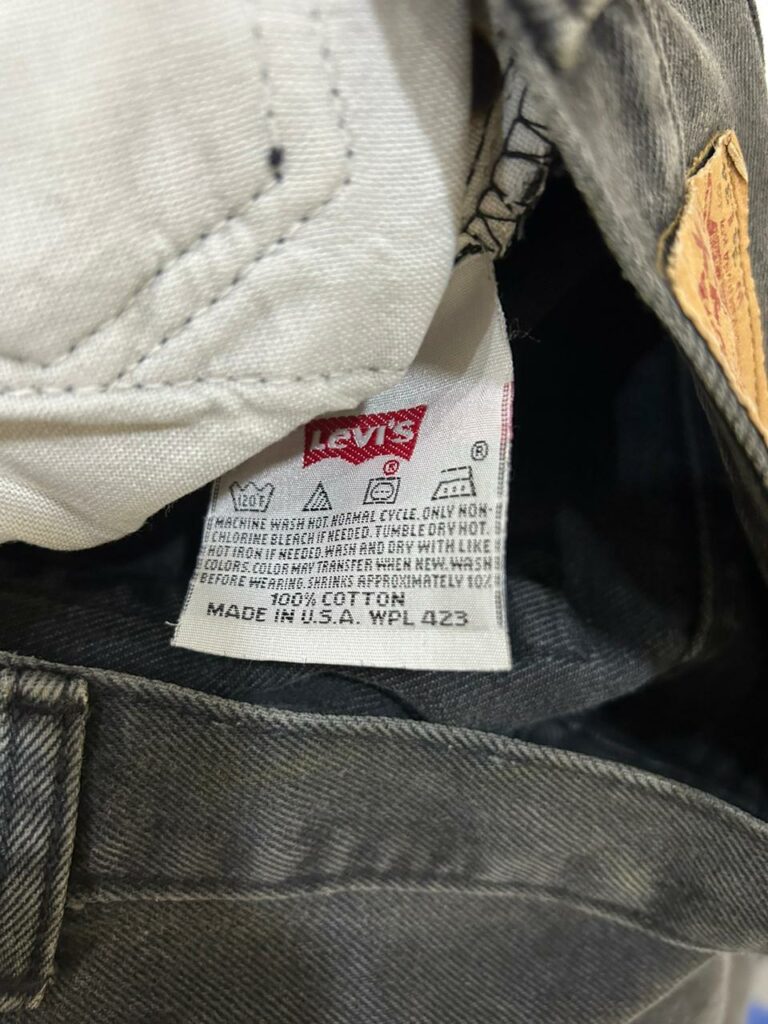
1993 to early 2000s: These were newer and larger in length and size. Looking something like this from the back.
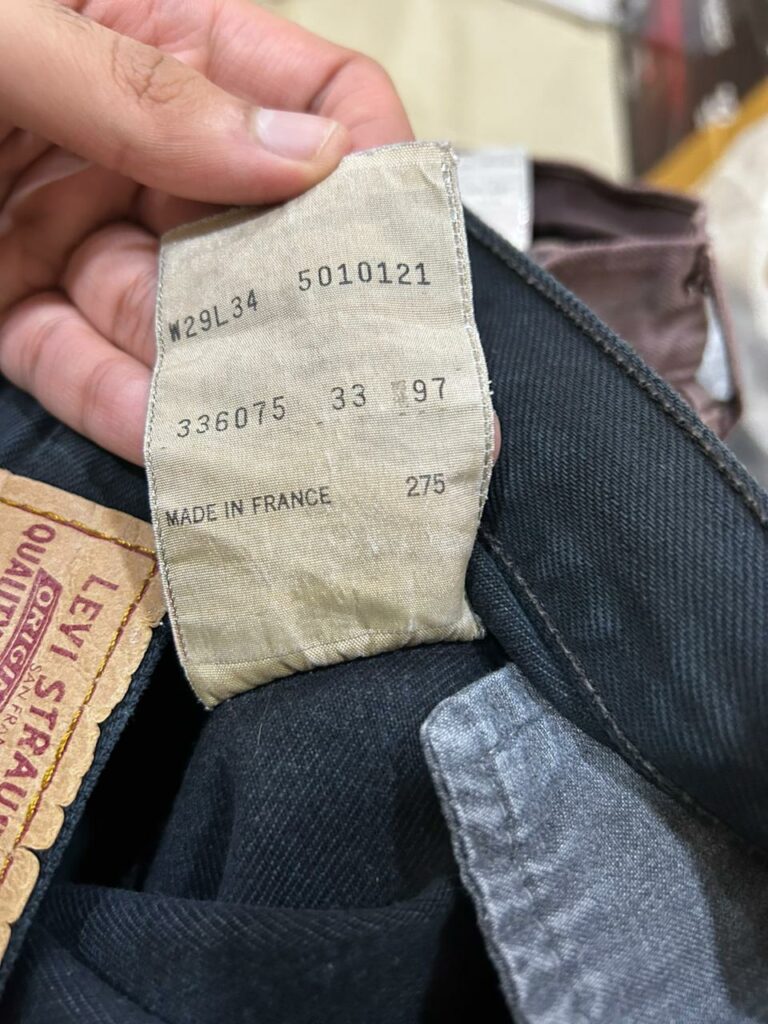
The very newer ones are going to have this kind of a slippery texture on the care tags and are, frankly, worthless in terms of vintage appeal.
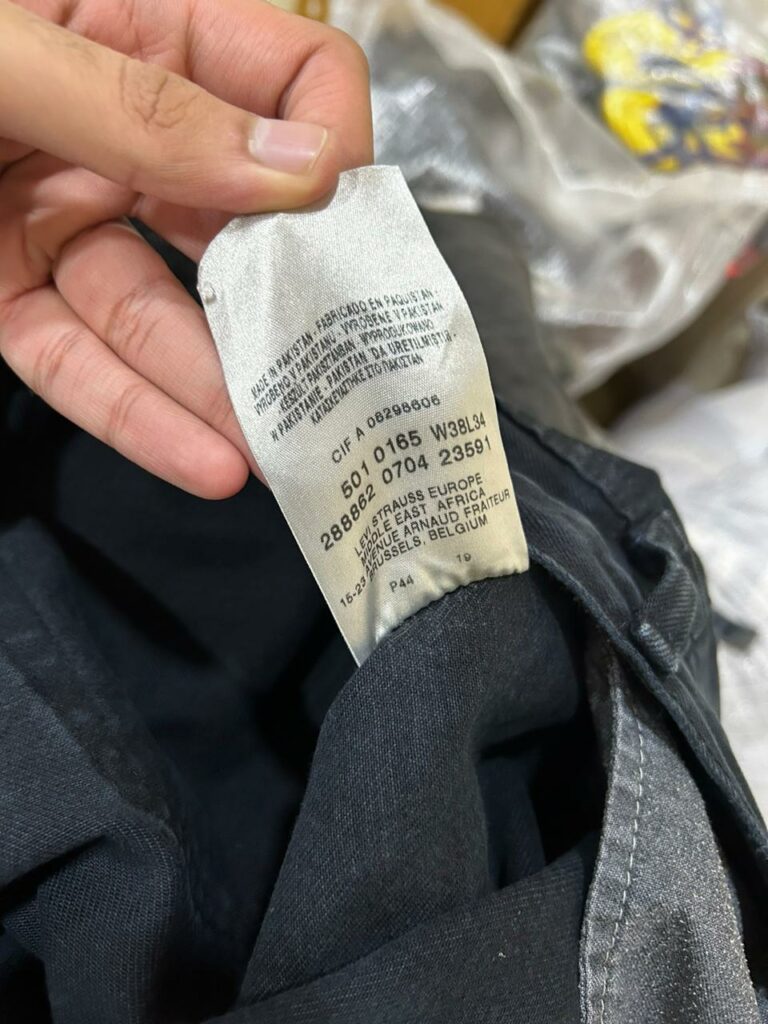
Also, check the “Made in-“ information on the tag. If the jeans is Made in USA and the other elements of the piece tell you its authentic, then it is probably a vintage Levi’s as the brand had the bulk of its manufacturing centered in USA until the late 20th century.
How to tell whether Levi’s is real or fake?
The waistband leather patch: The leather patch at the back of an authentic Levi’s piece is going to have immaculate quality of stitching and sturdiness with sharp writing. Be sure to check the spellings and the logo.
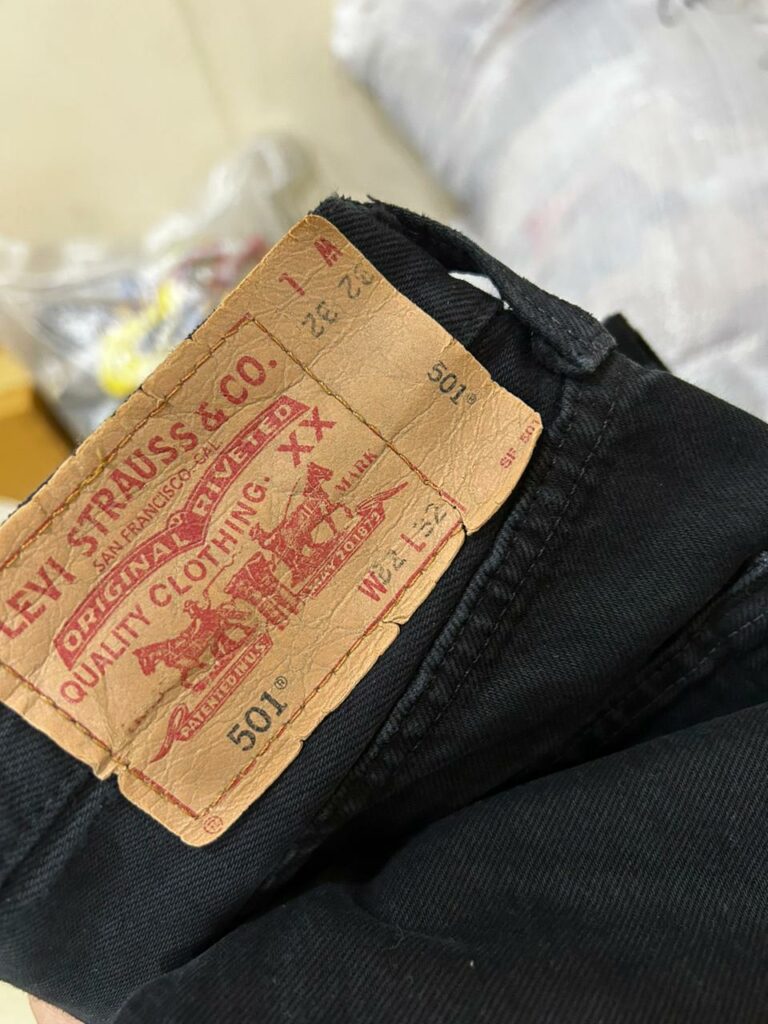
Even stitching: The stitching on an original pair is going to be even and consistent throughout a vintage Levi’s piece. There won’t be any loose threads or uneven seams.

The rivets and buttons: Originals are going to have engravings on the buttons and rivets (“Levi’s” or LS) and uniform shine. Fakes are likely to have incorrect spellings, cheap shine or no engravings. Moreover, on an authentic piece, you are going to see a style number engraved at the back of the waistband button. Check whether it matches the style number on the care label.
Additional tip: Some Levi’s tabs (irrespective of the color) are going to be blank, without the word ‘Levi’s’ printed on them, like this one:
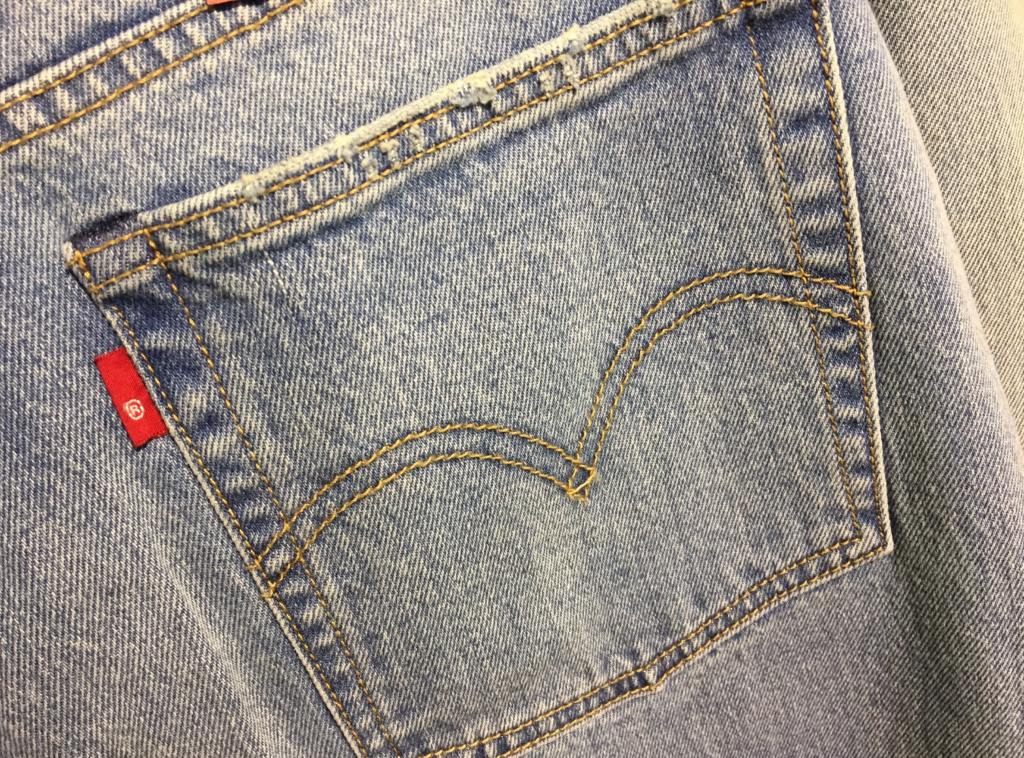
Levi’s intentionally does this to retain their copyright on the red tab itself. Altogether, just the entire quality of the piece is going to give away whether its an original or fake.
Conclusion
Hopefully, following this guide you are now well-equipped to score some vintage Levi’s treasures on your upcoming thrift adventures. As we embrace the nostalgia and the significance of vintage Levi’s, we not only recognize denim’s past but also the influence of the ‘original blue jean’ in contemporary culture. Good luck on your upcoming thrift adventures and be sure to enjoy the process!
Here is a guide on vintage Levi’s denim jackets.
Click here for information on some other exciting vintage brands.

